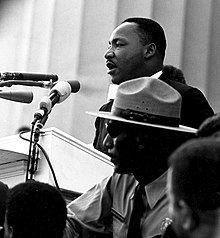http://www.naacp.org/pages/naacp-history
he economic history of the United States has its roots in European colonization in the 16th, 17th, and 18th centuries. Marginal colonial economies grew into 13 small, independent farming economies, which joined together in 1776 to form the United States of America. In 230 years the United States grew to a huge, integrated, industrialized economy that makes up nearly a quarter of the world economy. The main causes were a large unified market, a supportive political-legal system, vast areas of highly productive farmlands, vast natural resources (especially timber, coal, iron, and oil), and an entrepreneurial spirit and commitment to investing in material and human capital. The economy has maintained high wages, attracting immigrants by the millions from all over the world. Technological and industrial factors played a major role.
http://en.wikipedia.org/wiki/Economic_history_of_the_United_States
Civil rights organizations
Although they had white supporters and sympathizers, the modern civil rights movement was designed, led, organized, and manned by African Americans, who placed themselves and their families on the front lines in the struggle for freedom. Their heroism was brought home to every American through newspaper, and later, television reports as their peaceful marches and demonstrations were violently attacked by law enforcement. Officers used batons, bullwhips, fire hoses, police dogs, and mass arrests to intimidate the protesters. The second characteristic of the movement is that it was not monolithic, led by one or two men. Rather it was a dispersed, grass-roots campaign that attacked segregation in many different places using many different tactics. While some groups and individuals within the civil rights movement—such as Malcolm X—advocated Black Power, black separatism, or even armed resistance, the majority of participants remained committed to the principles of nonviolence, a deliberate decision by an oppressed minority to abstain from violence for political gain. Using nonviolent strategies, civil rights activists took advantage of emerging national network-news reporting, especially television, to capture national attention.[47]

Thanks for writing about American history that I have not heard about before. But I was little bit hard to read your writing at the black letters. And why don’t you put more information about “Malcolm X.”
ReplyDeleteHi it me again i think you should fixe your black letters because i can't see it okay but the information you post was good
ReplyDelete